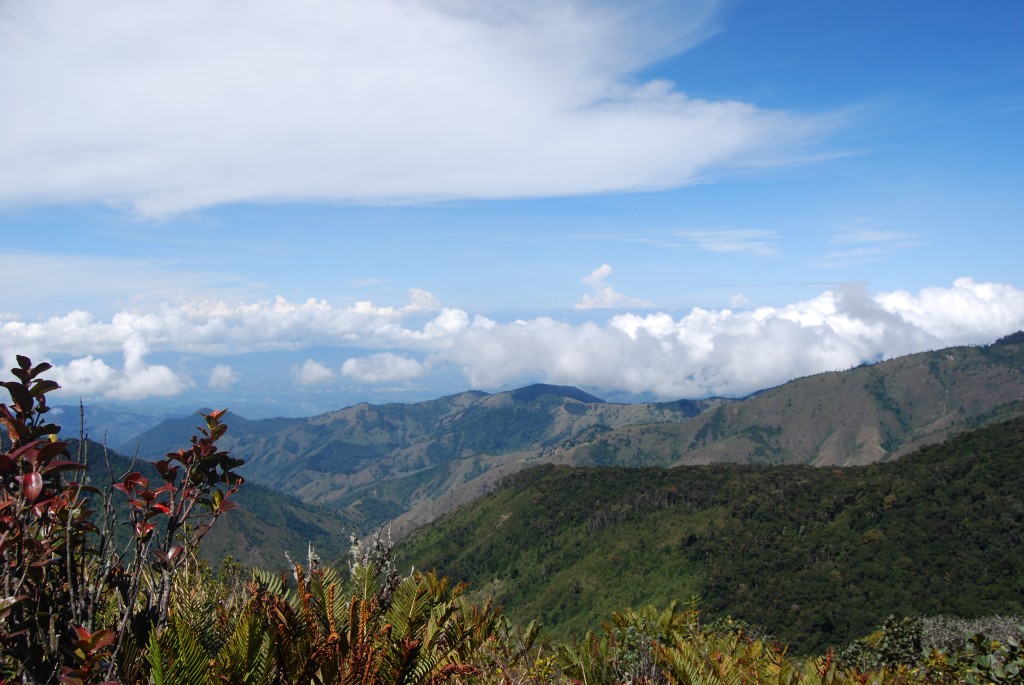Why are Cordillera de Talamanca Mountains So Prominent?
Unveiling Nature's Crown: Exploring the Magnificence of Cordillera de Talamanca Mountains
Cordillera de Talamanca Mountains

Standing tall in the southeastern half of Costa Rica and extending into the far west of Panama, the Cordillera de Talamanca Mountains command attention with their rugged peaks, lush forests, and rich biodiversity. These majestic mountains, enveloped by the pristine landscapes of La Amistad International Park, hold a significant place in the heart of both countries, offering a sanctuary for diverse ecosystems and a playground for adventurers and nature enthusiasts. In this extensive exploration, we delve deep into the prominence of Cordillera de Talamanca Mountains, unraveling the geological, ecological, and cultural significance that makes them a cherished treasure of Central America.
Understanding the Geological Origins:
To comprehend the prominence of Cordillera de Talamanca Mountains, one must first delve into their geological origins. The mountain range is part of the larger Central American Volcanic Arc, a chain of volcanoes and mountain ranges that stretches from Guatemala to Panama. The formation of the Cordillera de Talamanca Mountains can be attributed to the complex tectonic processes that have shaped the region over millions of years. These processes include subduction, where the Cocos Plate dives beneath the Caribbean Plate, leading to volcanic activity and the uplift of the land.
Geographical Features and Diversity:
The Cordillera de Talamanca Mountains boast a diverse array of geographical features, ranging from towering peaks to deep valleys, and from cascading waterfalls to crystal-clear rivers. The region’s topography is shaped by the convergence of various geological formations, including volcanic rocks, sedimentary layers, and ancient uplifts. This diversity of landscapes provides habitat for a wide range of plant and animal species, contributing to the region’s exceptional biodiversity. From cloud forests and paramo to alpine meadows and glacial lakes, the Cordillera de Talamanca Mountains offer a mosaic of habitats waiting to be explored.
Ecological Significance:
The ecological significance of Cordillera de Talamanca Mountains cannot be overstated. As part of La Amistad International Park, a UNESCO World Heritage Site shared between Costa Rica and Panama, the mountains serve as a crucial refuge for endangered species and a hotspot of biodiversity. The region is home to iconic species such as the resplendent quetzal, the jaguar, and the tapir, as well as numerous endemic plants and insects found nowhere else on Earth. The protection of these habitats is essential for maintaining the ecological balance of the region and preserving its natural heritage for future generations.
Cultural Heritage and Indigenous Connections:
Beyond their geological and ecological significance, the Cordillera de Talamanca Mountains hold deep cultural and spiritual importance for indigenous communities that have inhabited the region for centuries. The Bribri, Cabécar, and Ngäbe-Buglé peoples, among others, have forged a deep connection with the land, drawing on its resources for sustenance, medicine, and spiritual nourishment. Traditional practices such as agroforestry, hunting, and spiritual ceremonies continue to be passed down through generations, preserving the rich cultural heritage of the mountains. Just as we know Why are Cordillera de Carpish Mountains So Prominent?
Tourism and Recreation:
The prominence of Cordillera de Talamanca Mountains is further heightened by the region’s popularity as a tourist destination and outdoor recreation hub. Adventure seekers flock to the mountains to engage in activities such as hiking, mountain biking, birdwatching, and white-water rafting, drawn by the promise of stunning landscapes and adrenaline-pumping experiences. Guided tours and eco-lodges offer visitors the opportunity to explore the region sustainably, while contributing to local conservation efforts and community development initiatives.
Conservation Challenges and Future Prospects:
Despite their prominence, Cordillera de Talamanca Mountains face numerous conservation challenges, including deforestation, habitat fragmentation, and climate change. Illegal logging, agricultural expansion, and infrastructure development threaten to degrade the region’s fragile ecosystems and disrupt the balance of nature. However, there is hope on the horizon, as local communities, government agencies, and conservation organizations work together to protect and restore the mountains. Initiatives such as reforestation projects, sustainable agriculture practices, and ecotourism development offer promising solutions for ensuring the long-term preservation of Cordillera de Talamanca and their natural treasures.
Conclusion:
As we conclude our exploration of the prominence of Cordillera de Talamanca Mountains, we come to appreciate the myriad factors that contribute to their significance as a natural wonder of Central America. From their geological origins and ecological diversity to their cultural heritage and recreational opportunities, the mountains embody the majesty and resilience of the natural world. By understanding and valuing the prominence of Cordillera de Talamanca, we can work together to protect and preserve these precious landscapes for generations to come.
Know More about Cordillera de Talamanca Mountains.
What Are The Tourist Places Nearest to Cordillera de Talamanca Mountains?
When Were Cordillera de Talamanca Mountains Formed?
Where Are Cordillera de Talamanca Mountains Located?
Who Discovered Cordillera de Talamanca Mountains?
How to Reach Cordillera de Talamanca Mountains?




